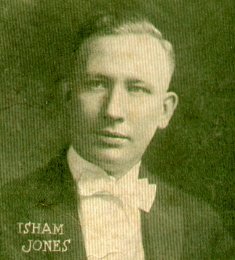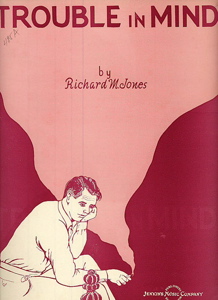Related Research Articles

"Stardust" is a jazz song composed by American singer, songwriter and musician Hoagy Carmichael with lyrics by Mitchell Parish. Now considered a standard and part of the Great American Songbook, the song has been recorded over 1,500 times either as an instrumental or vocal track, featuring different performers. During his time attending Indiana University, Carmichael developed a taste for jazz. He formed his own band and played at local events in Indiana and Ohio. Following his graduation, Carmichael moved to Florida to work for a law firm. He left the law sector and returned to Indiana, after learning of the success of one of his compositions. In 1927, after leaving a local university hangout, Carmichael started to whistle a tune that he later developed further. When composing the song, he was inspired by the end of one of his love affairs, and on the suggestion of a university classmate, he decided on its title. The same year, Carmichael recorded an instrumental version of the song for Gennett Records.

Isham Edgar Jones was an American bandleader, saxophonist, bassist and songwriter.
John Alfred Mandel was an American composer and arranger of popular songs, film music and jazz. The musicians he worked with include Count Basie, Frank Sinatra, Peggy Lee, Anita O'Day, Barbra Streisand, Tony Bennett, Diane Schuur and Shirley Horn. He won five Grammy Awards, from 17 nominations; his first nomination was for his debut film score for the multi-nominated 1958 film I Want to Live!

Underground is the seventh studio album that Thelonious Monk recorded for Columbia Records. It features Monk on piano, Larry Gales on bass, Charlie Rouse on tenor sax, and Ben Riley on drums. This is the last Monk album featuring the Thelonious Monk Quartet.

"Tea for Two" is a 1924 song composed by Vincent Youmans, with lyrics by Irving Caesar. It was introduced in May 1924 by Phyllis Cleveland and John Barker during the Chicago pre-Broadway run of the musical No, No, Nanette. When the show finally hit Broadway on September 16, 1925, Nanette was played by Louise Groody, and her duet with Barker of "Tea for Two" was a hit. The song went on to become the biggest success of Youmans' career.

"Cast Your Fate to the Wind" is an American jazz instrumental selection by Vince Guaraldi; later, a lyric was written by Carel Werber. It won a Grammy Award for Best Original Jazz Composition in 1963.
"Let's Face the Music and Dance" is a song written in 1936 by Irving Berlin for the film Follow the Fleet, where it was introduced by Fred Astaire and featured in a celebrated dance duet with Astaire and Ginger Rogers. The jazz song has also been covered by various artists years following its release, including Nat King Cole, Ella Fitzgerald, Frank Sinatra, Mel Torme, Todd Gordon and others.
A music genre is a conventional category that identifies some pieces of music as belonging to a shared tradition or set of conventions. It is to be distinguished from musical form and musical style, although in practice these terms are sometimes used interchangeably.
"The Charleston" is a jazz composition that was written to accompany the Charleston dance. It was composed in 1923, with lyrics by Cecil Mack and music by James P. Johnson, a composer and early leader of the stride piano school of jazz piano.

"Trouble in Mind" is a vaudeville blues-style song written by jazz pianist Richard M. Jones. Singer Thelma La Vizzo with Jones on piano first recorded it in 1924 and in 1926, Bertha "Chippie" Hill popularized the tune with her recording with Jones and trumpeter Louis Armstrong. The song became an early blues standard, with numerous renditions by a variety of musicians in a variety of styles.

Swing jazz emerged as a dominant form in American music, in which some virtuoso soloists became as famous as the band leaders. Key figures in developing the "big" jazz band included bandleaders and arrangers Count Basie, Cab Calloway, Jimmy and Tommy Dorsey, Duke Ellington, Benny Goodman, Fletcher Henderson, Earl Hines, Glenn Miller, and Artie Shaw. Duke Ellington and his band members composed numerous swing era hits that have become standards: "It Don't Mean a Thing " (1932), "Sophisticated Lady" (1933) and "Caravan" (1936), among others. Other influential bandleaders of this period were Benny Goodman and Count Basie.

The period from the end of the First World War until the start of the Depression in 1929 is known as the "Jazz Age". Jazz had become popular music in America, although older generations considered the music immoral and threatening to cultural values. Dances such as the Charleston and the Black Bottom were very popular during the period, and jazz bands typically consisted of seven to twelve musicians. Important orchestras in New York were led by Fletcher Henderson, Paul Whiteman and Duke Ellington. Many New Orleans jazzmen had moved to Chicago during the late 1910s in search of employment; among others, the New Orleans Rhythm Kings, King Oliver's Creole Jazz Band and Jelly Roll Morton recorded in the city. However, Chicago's importance as a center of jazz music started to diminish toward the end of the 1920s in favor of New York.
"Li'l Darlin'" is a jazz standard, composed and arranged in 1957 by Neal Hefti for the Count Basie Orchestra and first recorded on the 1958 album, The Atomic Mr. Basie.

Alan Bergman and Marilyn Keith Bergman were an American songwriting duo. Married from 1958 until Marilyn's death, together they wrote music and lyrics for numerous celebrated television, film, and stage productions. The Bergmans enjoyed a successful career, honored with four Emmys, three Oscars, and two Grammys. They are in the Songwriters Hall of Fame.
"Easy Street" is a jazz standard and popular song with lyrics and music written by Alan Rankin Jones in 1940. It was first recorded by 'Jimmy Lunceford and his Orchestra.'
References
- ↑ "Alan Rankin Jones | Compositions". AllMusic. Retrieved 2019-03-27.
- ↑ "The Golden Age Of Light Music: 100 Greatest American ... - Guild: GLCD5231 | Buy from ArkivMusic". www.arkivmusic.com. Archived from the original on 2019-03-27. Retrieved 2019-03-27.
- ↑ "Easy Street by Alan Rankin Jones: Vanguard Songs, Hollywood, California Unbound, Edition Not Stated. - Hastings of Coral Springs". www.abebooks.com. Retrieved 2019-03-27.
- 1 2 Hischak, Thomas S. (2002). The Tin Pan Alley Song Encyclopedia. Westport, Conn.: Greenwood Press. p. 97. ISBN 0313319928 . Retrieved 2 April 2019.
- ↑ Dodd, David; Hunter, Robert; Trist, Alan; Barlow, John; Carpenter, Jim (2005). The Complete Annotated Grateful Dead Lyrics. New York: Simon & Schuster, Inc. p. 102. Retrieved 2 April 2019.
- ↑ Kinkle, Roger (1974). The Complete Encyclopedia of Popular Music and Jazz, 1900-1950. New Rochelle, N.Y.: Arlington House. p. 366. ISBN 0870002295 . Retrieved 2 April 2019.
- ↑ Alan Rankin Jones , p. 42, at Google Books